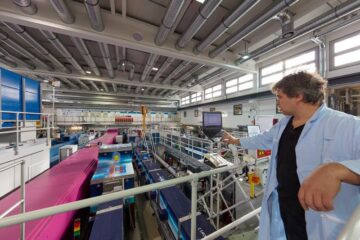Laccat – A novel class of Zn-catalyst for the polymerization of cyclic esters

The use of heavy metals in chemical production and their
concentration in products, in particular biodegradable polymers, become increasingly an issue of concern. Often zinc is considered less problematic compared to other catalytic active elements like tin. A novel type of zinc complexes has been proved to successfully catalyze ring-opening polymerizations of lactides. In principle, these new catalyst can be used for the ringopening polymerisation of a broad range of cyclic esters. Commercial Opportunity The novel Zn-catalysts offer the opportunity to substitute heavy metal catalyst. They can be utilized to catalyze the polymerization of lactones, lactams, lactims, lactols, lactides and thio-derivatives. The Zn-catalysts are stable with respect to air and air humidity and have been successfully tested in a lactide polymerization in the melt at 135 – 200°C. These new catalyst are suitable for the production of polymers with an optimized polydispersity. For example, they can easily be used for the production of Polylactides (PLA) in conventional plants.
Weitere Informationen: PDF
PROvendis GmbH
Tel.: +49 (0)208/94105 10
Ansprechpartner
Dipl.-Ing. Alfred Schillert
Media Contact
Alle Nachrichten aus der Kategorie: Technologieangebote
Neueste Beiträge

Porosität von Sedimentgestein mit Neutronen untersucht
Forschung am FRM II zu geologischen Lagerstätten. Dauerhafte unterirdische Lagerung von CO2 Poren so klein wie Bakterien Porenmessung mit Neutronen auf den Nanometer genau Ob Sedimentgesteine fossile Kohlenwasserstoffe speichern können…

Transparente emissive Mikrodisplays
… für ultraleichte und kompakte Augmented-Reality-Systeme. Im Rahmen des Projektes HOT („Hochperformante transparente und biegbare Mikro-Elektronik für photonische und optische Anwendungen“) haben Forschende des Fraunhofer-Instituts für Photonische Mikrosysteme IPMS ein…

Mikroplastik im Meer: Neue Methode
Mikroplastik im Meer könnte größtenteils auch aus Beschichtungen sowie Farbanstrichen von Schiffen und Bauwerken im Meer stammen. Daten dazu gibt es allerdings kaum. Das Helmholtz-Zentrum Hereon und das Bundesamt für…

















